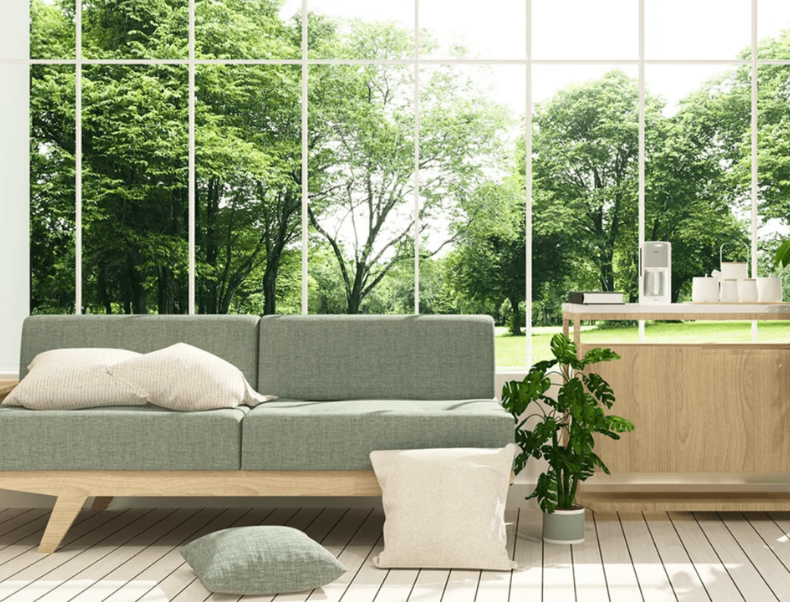How Sustainable Furniture Design Increases Profit and Reduces Environmental Impact

The Business Case for Sustainable Furniture Design
Sustainability is no longer a niche concern; it's a business imperative. Consumers, businesses, and regulators are increasingly demanding environmentally responsible products. Sustainable furniture manufacturing reduces environmental impact, conserves resources, and enhances brand reputation. It also aligns with global efforts to reduce carbon emissions and waste, ultimately contributing to a circular economy where materials are reused and repurposed rather than discarded.
Beyond environmental concerns, sustainability also impacts the bottom line. Eco-conscious consumers are willing to pay a premium for products that are responsibly sourced and manufactured. Additionally, sustainable practices can reduce material costs, improve operational efficiencies, and open doors to partnerships with businesses prioritizing green procurement. Companies that fail to integrate sustainability into their design and production processes risk falling behind in an increasingly eco-aware market.
Sustainable Materials in Furniture Manufacturing
An essential aspect of sustainable furniture production is material selection. Some of the most environmentally friendly options include:
- Reclaimed Wood – Reduces deforestation and gives new life to previously used materials.
- Bamboo – A fast-growing and renewable alternative to traditional hardwoods.
- Recycled Metals and Plastics – Diverts waste from landfills and reduces the energy-intensive extraction of raw materials such as steel and aluminum.
- Low-VOC Finishes and Adhesives – Improves indoor air quality and reduces harmful emissions.
- Biodegradable or Recyclable Upholstery Fabrics – Minimize end-of-life impact with materials like recycled nylon (rPA6, rPA66), rPET, and rHDPE reclaimed from fishing nets, carpets, and textiles for use in chair shells, mesh backs, and upholstery.
By integrating these materials, manufacturers can reduce their ecological footprint while creating high-quality, durable products.
The Role of LCA in Supporting Sustainability
Life Cycle Assessment (LCA) is a critical tool for assessing a product’s environmental footprint across its entire lifecycle—from raw material extraction to disposal. LCA helps furniture manufacturers:
- Identify carbon hotspots in production and supply chains.
- Compare materials and processes to choose the most sustainable options.
- Quantify emissions and resource usage to support sustainability claims.
- Improve transparency and credibility in sustainability reporting.
- Align with regulatory and certification requirements for eco-friendly products.
Environmental Product Declarations (EPDs)
EPDs provide verified, transparent data on a product’s environmental footprint, helping furniture manufacturers meet regulatory requirements, achieve certifications like LEED, BIFMA LEVEL, and BREEAM, and build trust with customers and stakeholders.
Based on Life Cycle Assessments (LCAs), EPDs evaluate a product’s impact from raw material extraction through manufacturing, use, and end-of-life. They help identify carbon hotspots, compare materials and processes, quantify emissions, and guide more sustainable design and sourcing decisions.
Top 5 Furniture Certifications & Ratings
Obtaining an LCA is often a prerequisite for many of these certifications, as it provides the necessary data to validate a product's sustainability claims. To ensure sustainability and transparency, various certifications help manufacturers and consumers identify eco-friendly furniture. Here are five key certifications:
- BIFMA LEVEL – A comprehensive sustainability certification for commercial furniture that evaluates environmental impacts, material selection, energy use, and social responsibility across the product’s lifecycle. It provides a credible benchmark for manufacturers aiming to reduce their environmental footprint while supporting safe and ethical labor practices.
- SCS Indoor Advantage – Focuses on indoor air quality by certifying furniture with low volatile organic compound (VOC) emissions. This certification ensures that products contribute to healthier indoor environments, helping businesses meet strict indoor air quality standards in offices, schools, and healthcare facilities.
- Living Product Challenge (LPC) – Encourages manufacturers to design products that achieve net-positive impacts on the environment and society. LPC evaluates a product across multiple criteria, including energy use, water stewardship, material transparency, and social responsibility, pushing companies to innovate beyond conventional sustainability standards.
- LEED (Leadership in Energy and Environmental Design) – Primarily a green building certification, LEED awards credits to projects that incorporate sustainable furniture. Furniture that meets LEED criteria contributes to points in categories like materials and resources, indoor environmental quality, and innovation, helping building projects achieve overall sustainability recognition.
- Green Seal – Certifies products based on rigorous environmental and health criteria, including sustainable material sourcing, energy efficiency, and reduced chemical emissions. Furniture certified by Green Seal demonstrates a measurable commitment to protecting human health and minimizing environmental impact throughout its lifecycle.
Additionally, Forest Stewardship Council (FSC) certification ensures that wood is sourced from responsibly managed forests, and Cradle to Cradle Certification evaluates products based on material health, circularity, and social fairness.
Key Takeaways
Sustainable furniture manufacturing is more than a trend—it’s a strategic imperative. By understanding and applying tools like Life Cycle Assessments (LCAs) and Environmental Product Declarations (EPDs), manufacturers can make smarter design choices, reduce environmental impact, and position themselves for long-term success.
- Leverage LCAs for data-driven decisions – Identify carbon hotspots, optimize materials and processes, and improve supply chain efficiency.
- Sustainable design drives business value – Eco-friendly furniture enhances brand reputation, meets market demand, and supports long-term profitability.
- Certifications validate sustainability – BIFMA LEVEL, SCS Indoor Advantage, LEED, and others provide transparency and credibility for sustainability claims.
- Material choices matter – Reclaimed wood, bamboo, recycled metals and plastics, low-VOC finishes, and recyclable fabrics reduce environmental impact.
- LCAs underpin certification and reporting – They provide the data foundation for EPDs and help manufacturers achieve recognized sustainability standards.
- Technology is accelerating progress – AI-driven LCAs and closed-loop manufacturing enable faster, more accurate sustainability assessments.
- Sustainability delivers competitive advantage – Manufacturers who prioritize eco-friendly practices gain consumer trust, regulatory compliance benefits, and market differentiation.
By integrating these strategies, furniture manufacturers can not only minimize their ecological footprint but also unlock new market opportunities, meet evolving customer expectations, and lead the industry toward a more sustainable future.
Next Steps: Drive Sustainable Furniture Forward
CarbonBright’s AI-powered platform helps furniture manufacturers streamline sustainability reporting—from Life Cycle Assessments (LCAs) to Environmental Product Declarations (EPDs). Automate data collection, evaluate materials, quantify impacts, and generate reports that meet certification and regulatory requirements—all faster, easier, and more cost-effective.
Backed by third-party verification with trusted EPD Operators, every report delivers credibility and compliance.
Take the next step: Contact CarbonBright to simplify sustainability and showcase your eco-friendly products.



